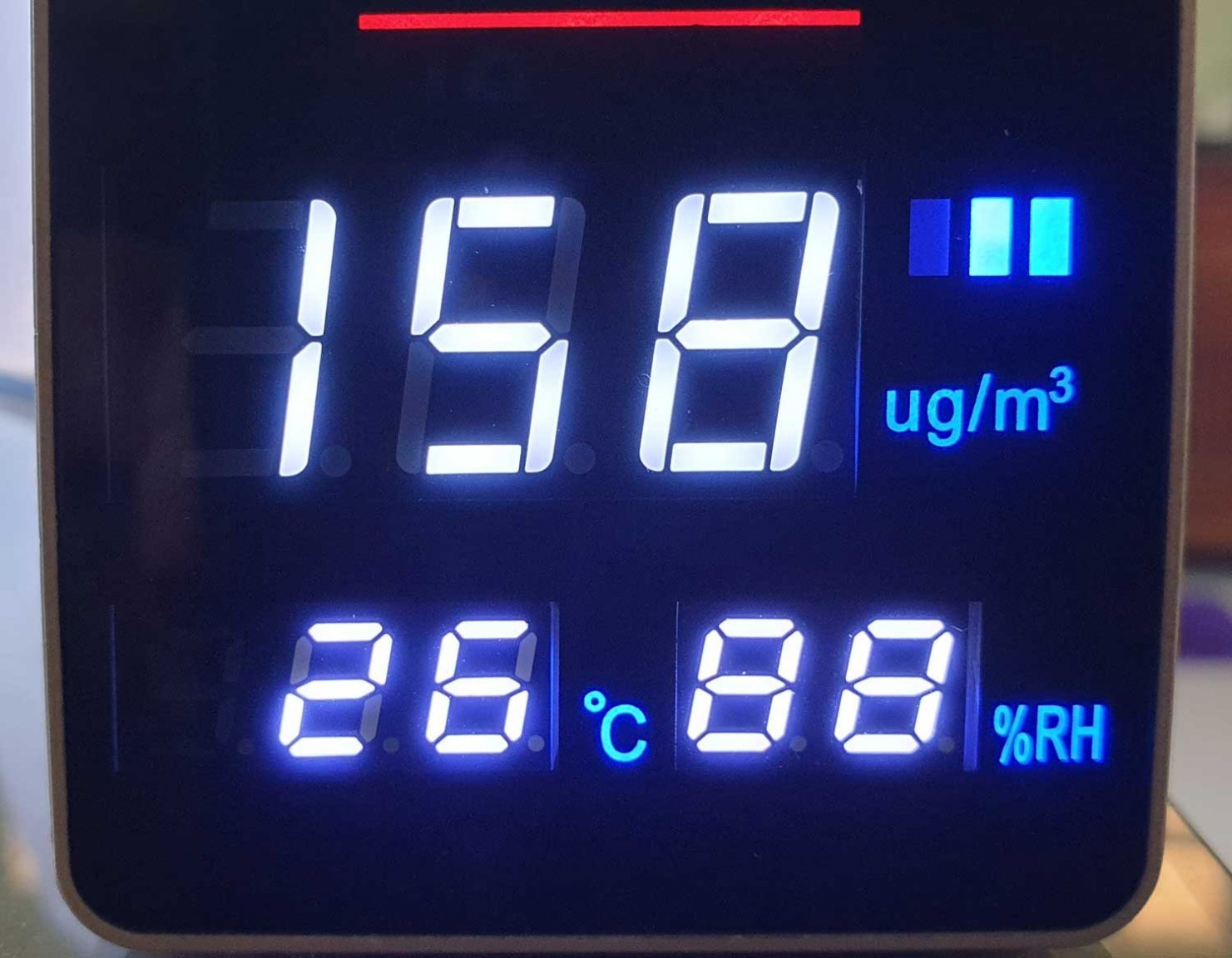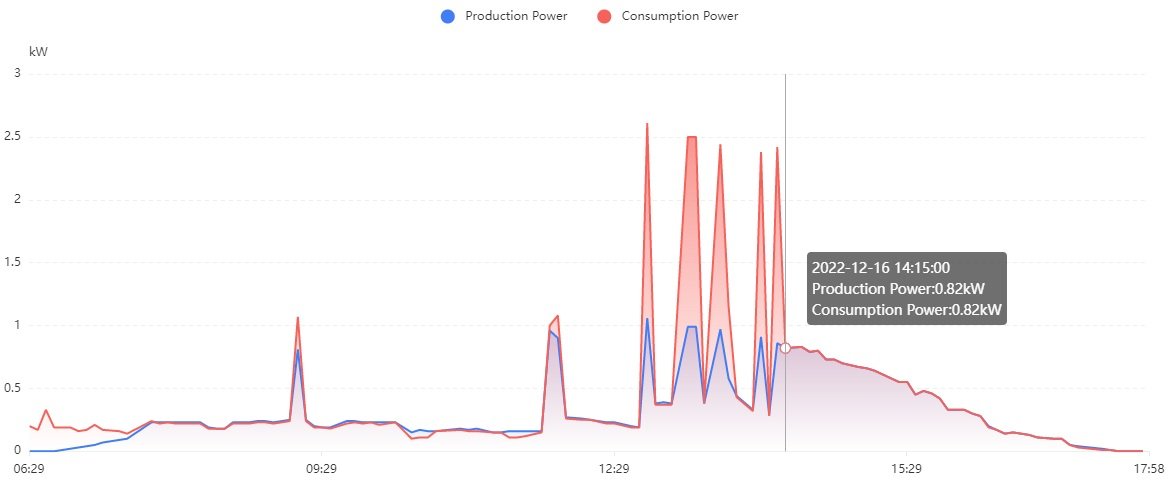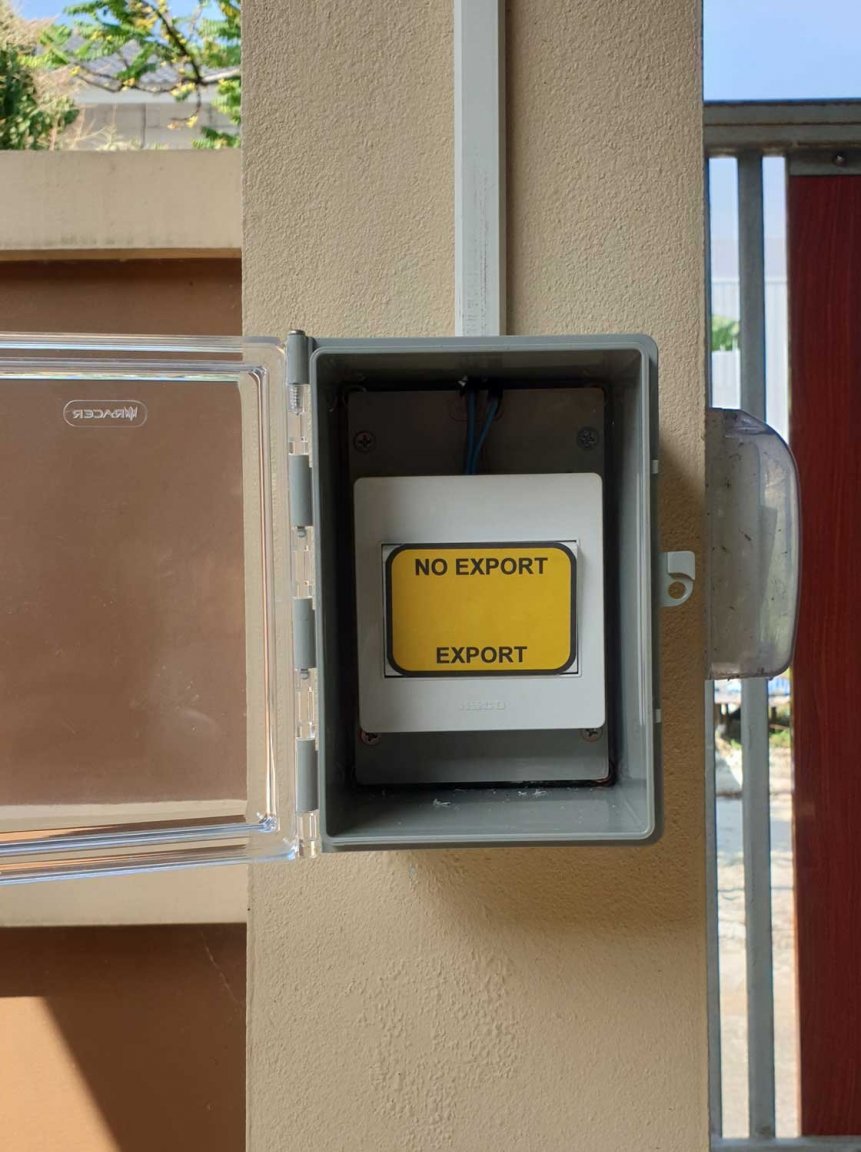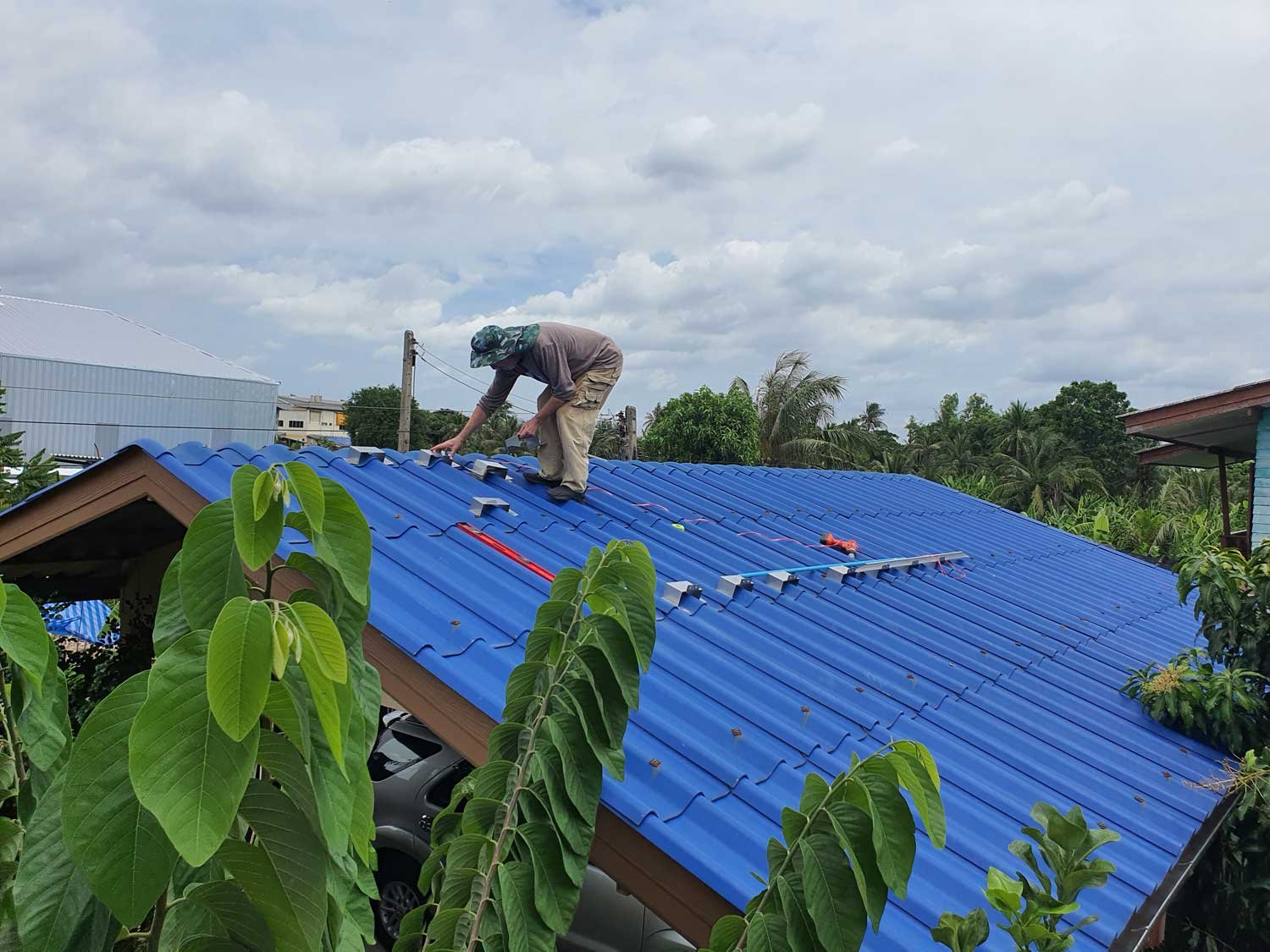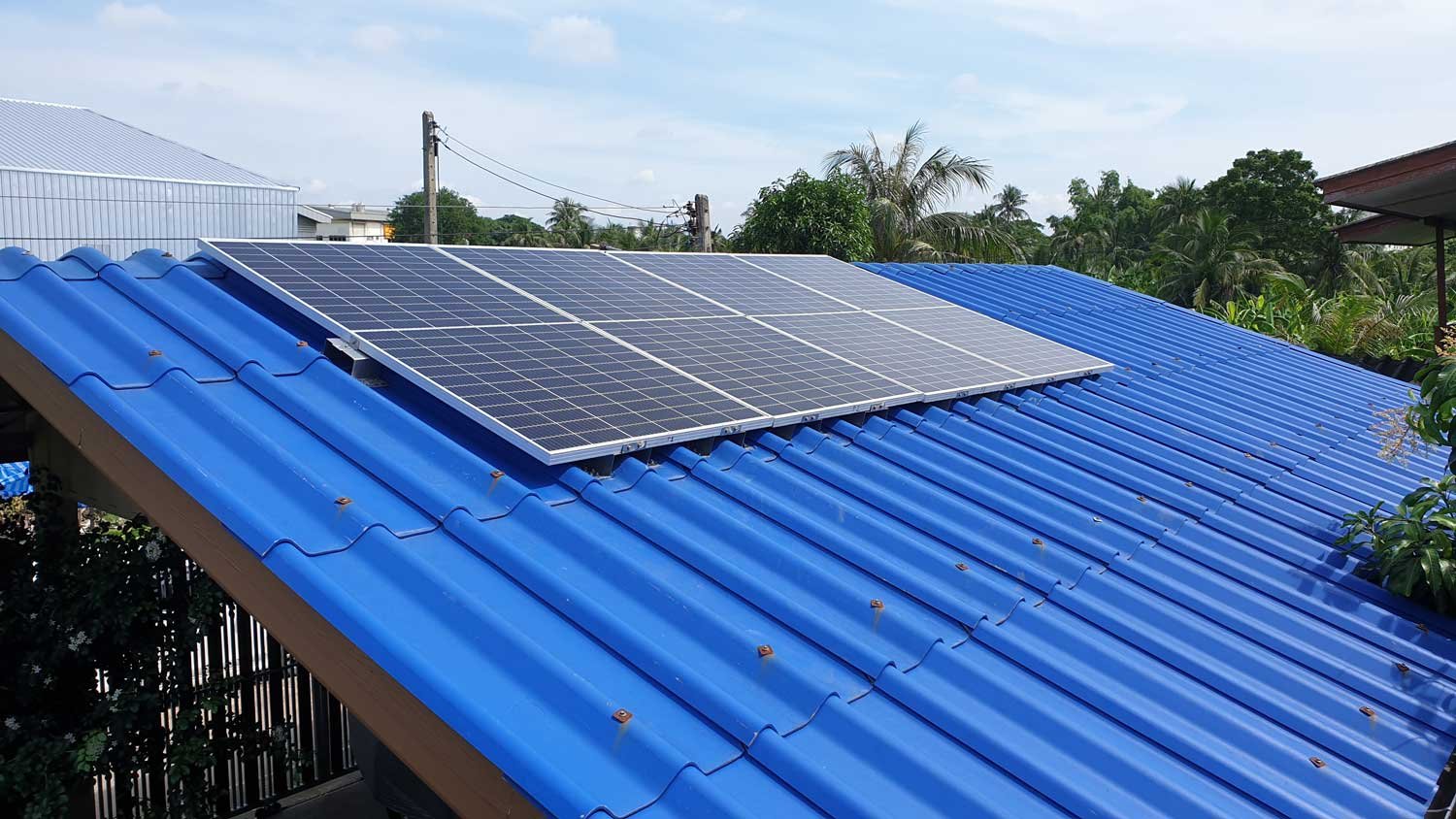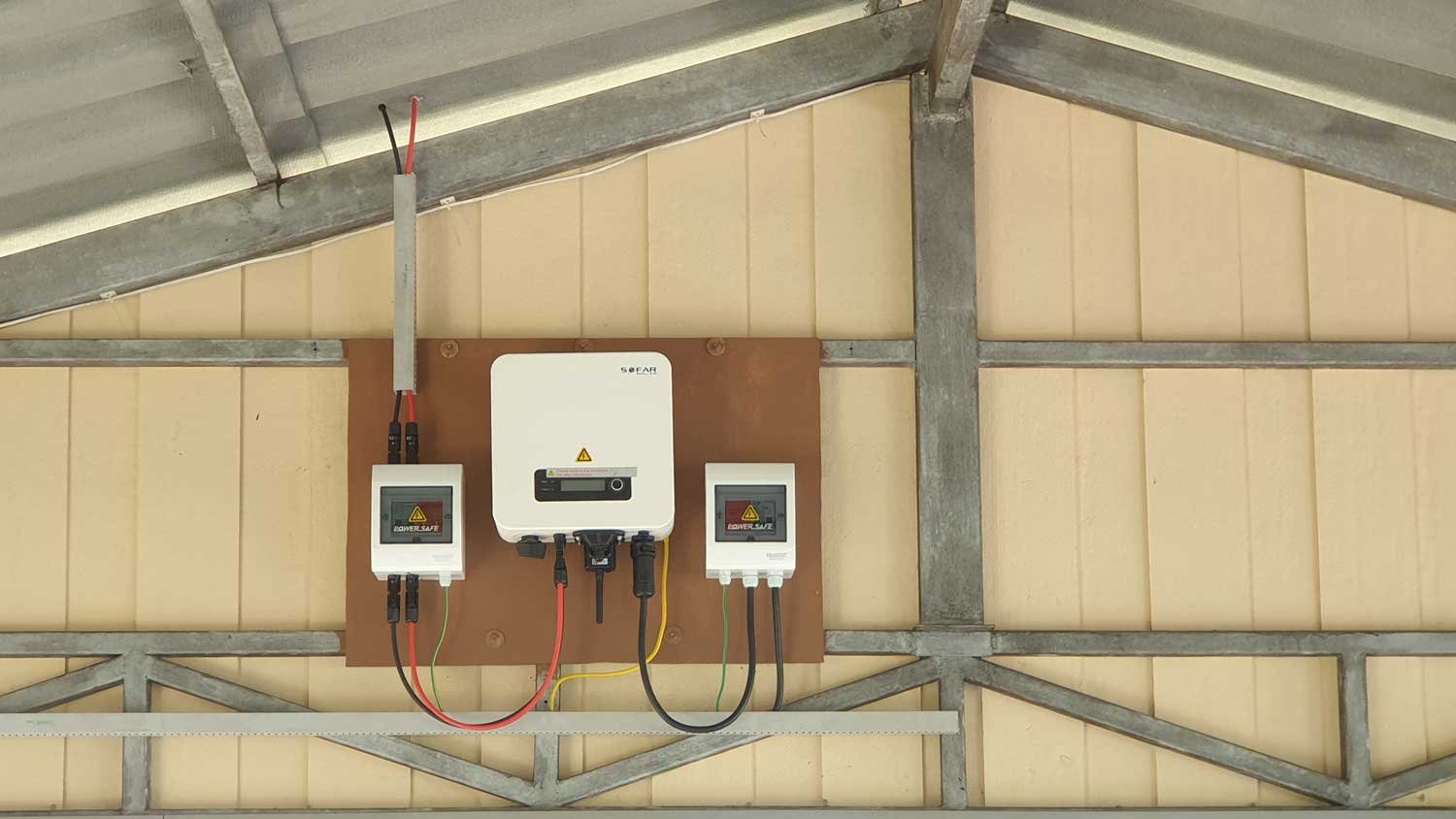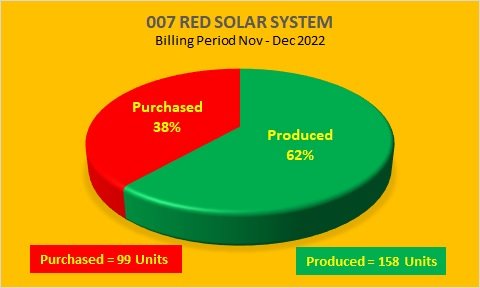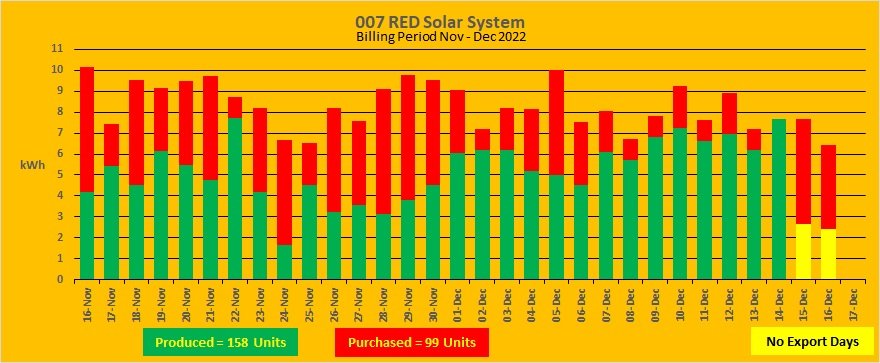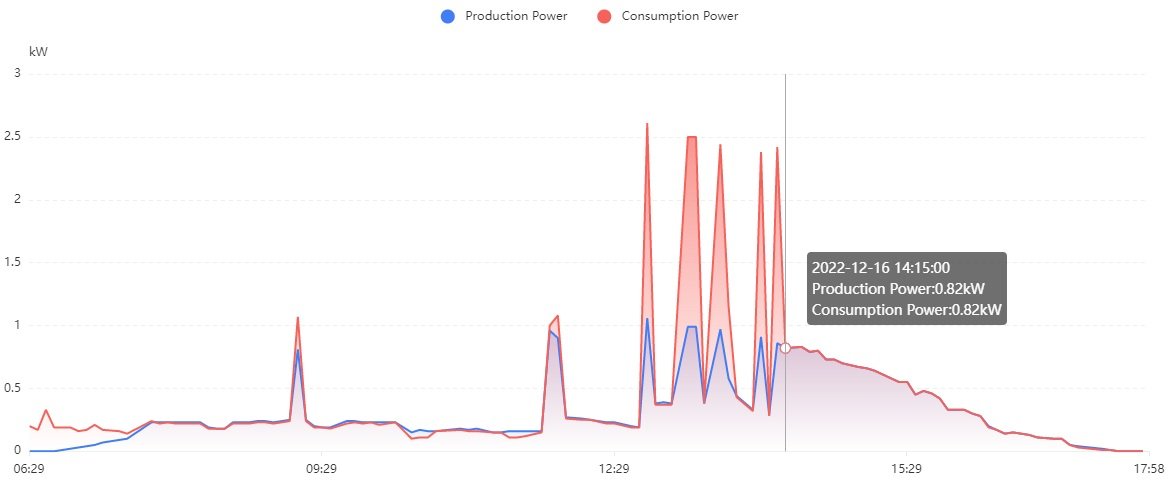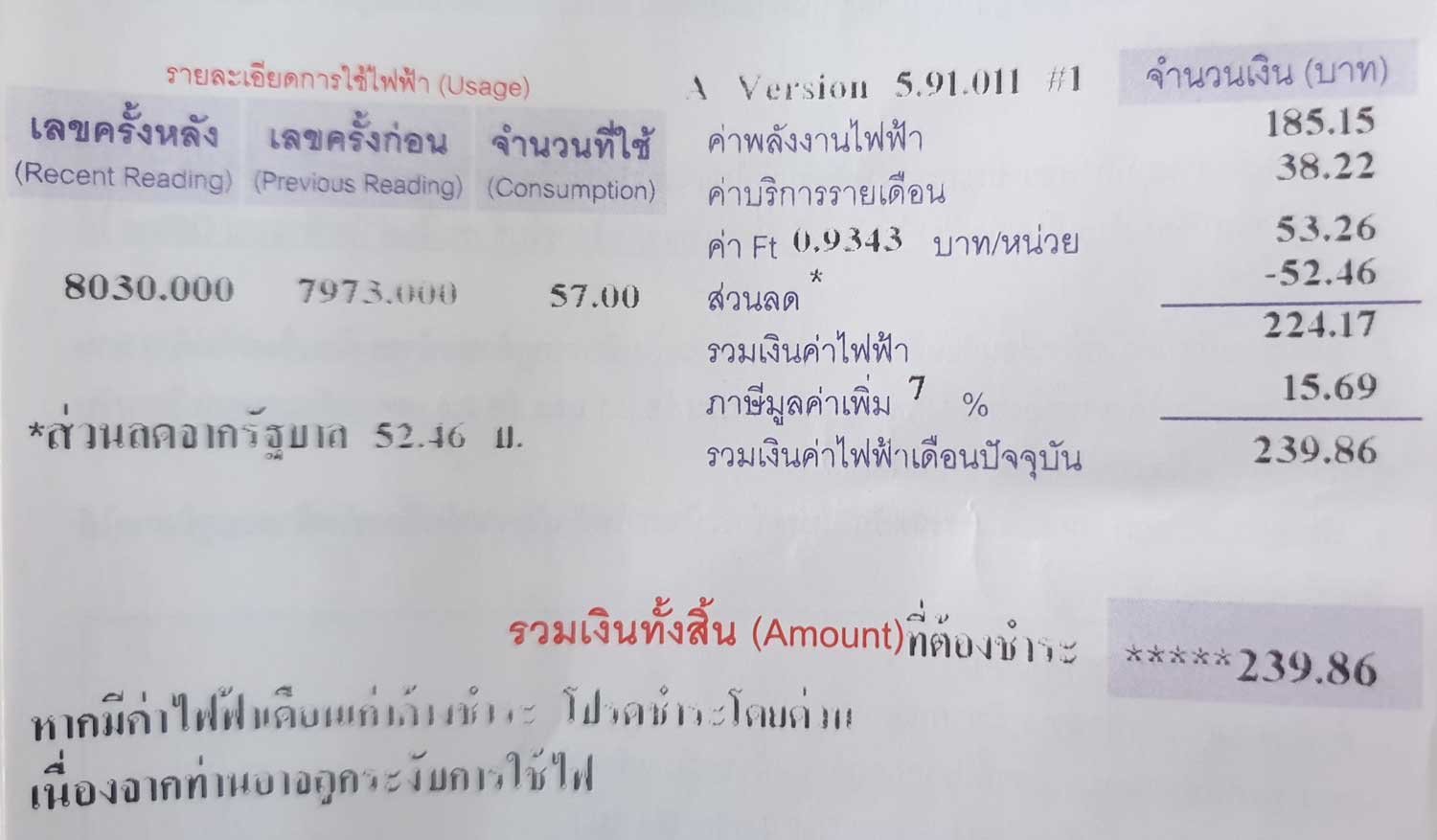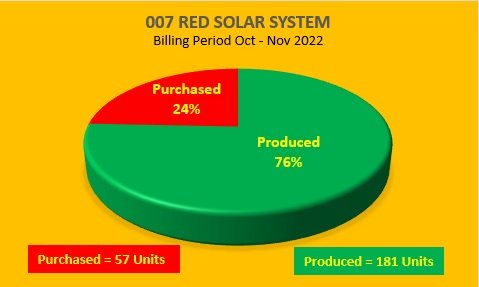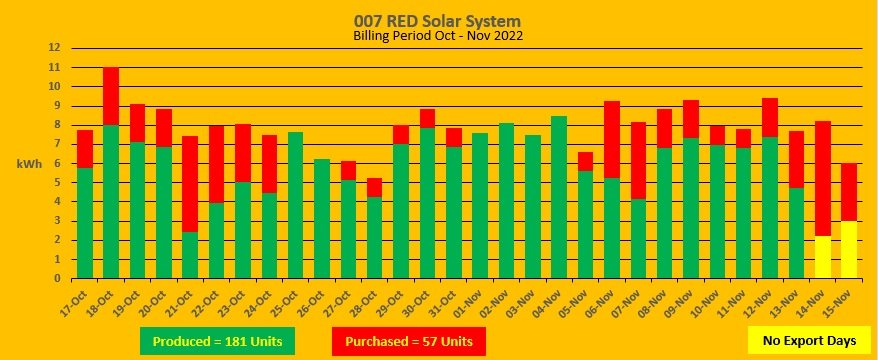-
Posts
936 -
Joined
-
Last visited
Content Type
Events
Forums
Downloads
Quizzes
Gallery
Blogs
Everything posted by 007 RED
-

How about a solar car port on a budget?
007 RED replied to Crossy's topic in Alternative/Renewable Energy Forum
The thought of getting a 'local' to clean them every so often had crossed my mind, but again, who is responsible if they fall off? My better half has suggested getting someone to construct a 'walk-way' on the car port roof, similar to yours, which would avoid the risk of slipping on the incline. Good idea ????. I think that may be a project for later in the year. In the short term I'm seriously considering getting an electric solar panel brush system, as shown below. The motor is 24V (AC-DCconverter supplied), 300RPM. Water supply is connected to nearby tap in garden. Handle extendable from 2M to 7M. With this I can reach all of the panels comfortably from a step ladder. Cost about 10K, which is a lot cheaper than the hospital bills might be if I came a cropper. -

How about a solar car port on a budget?
007 RED replied to Crossy's topic in Alternative/Renewable Energy Forum
-

How about a solar car port on a budget?
007 RED replied to Crossy's topic in Alternative/Renewable Energy Forum
I just looked at my panels again this morning - less than 24 hours after I cleaned them - and already there is a fine layer of dust on them. It looks like I may have to do them again next week. The culprit is the pollution hanging over us because of the cold layer in the upper atmosphere. My little PM2.5 meter is almost off the scale, as shown below. (photo taken 3/1/23 @ 9:51 am) My problem is getting up onto the car port roof (approx. 4 meters above the ground). At 76 YO, falling through the cement roof tiles is going to mean a very expensive hospital bill, or possibly a cheaper trip to the local temple ????. -

2 or 3 panels / plug in solution
007 RED replied to zappalot's topic in Alternative/Renewable Energy Forum
Yep, they are big and heavy. FYI... I've attached below the spec. SRP-(655-670)-BMC-HV_210_EN.pdf Good luck with your proposed project. -

How about a solar car port on a budget?
007 RED replied to Crossy's topic in Alternative/Renewable Energy Forum
I'm not quite in the same 'boat'. Since the meter was read 14 days ago my small scale system has been satisfying most of our daytime needs, resulting in us only needing to purchase 13 units. I checked the panels yesterday and, as can be seen from the photo below, they are 'caked in dust' which must have a degrading effect on their efficiency, so I early this morning it was up on the car port roof with the hose and soft brush. They looked brand new when I finished. I'm not sure if there will be any significant improvement in output as its difficult to measure with so many variable. That said, if the weather remains the same until the next meter reading in 13 days, we'll have an extremely small bill, possibly the lowest since the system has been in operation. -

2 or 3 panels / plug in solution
007 RED replied to zappalot's topic in Alternative/Renewable Energy Forum
@zappalot You are aware that these solar panels are big, very big! 2384 x 1303 x 35 mm and they weigh a mere 38.5 kg each. Looking at your roof pictures, I would beg to suggest that at that weight you are going to need to seriously think how you will get the panels up that roof. Also looking at the angle of the roof you're going to need some very substantial fixings to hold them down with that weight. The last thing that you want is for them to lift off in the wind and slide down and hit someone/something, as that would be very expensive. -
@notrub As you are no doubt aware, what documents are required to renew your permission to stay depends upon a mystical combination of which immigration office you use, which immigration officer will process your application, what side of the bed they got out of that morning and what day of the week or month it is. According to the Immigration Regulations there are specific documents that you must produce in order to facilitate your renewal. Then there are any number of other documents that the officer may decide are also ‘mandatory’. From my experience of renewing my permission to stay (non-O based on retirement) for the past 10 years, I go to the immigration office (Nakhon Pathom) with 2 folders. One contains all the documents that are required under the relevant Regulations, the other contains documents which the officer might ask for. Folder #1 – Must Have Documents Passport Completed TM7 form – Application for extension of temporary stay in kingdom. Passport style photo of self (4 x 6 cm). B&W photocopy of passport biographical page. B&W photocopy of last permission to stay stamp. For 800K funds in bank Bank book - updated. B&W Photocopy of bank book ownership data page and page(s) showing funds – as updated. Letter from bank confirming ownership of account and funds dated same day as bank book update. For monthly overseas transfer of funds Bank book - updated. Copy of bank book ownership page and pages showing funds deposited from overseas. Bank statement for past 12 months showing transfer of funds monthly from overseas. Letter from bank confirming ownership of account and funds. 1,900 THB renewal fee. NOTE: Documents from folder #1 are the only ones handed over to the immigration officer. If the officer asks for anything else, then they are given it from folder #2 which is held in reserve. Folder #2 – Backup Documents (just in case) B&W photocopies of all previous permission to stay stamps. B&W photocopy of TM30 – Notification of aliens staying at residence. B&W Photocopy of current TM47 receipt – Notification of staying longer than 90 days. B&W photocopy of TM6 – Departure card. B&W photocopies of wife’s ID card and house registration book. B&W photocopy of pink card and yellow house book. B&W photocopy of marriage certificate. B&W Photocopy of map showing location of house (Google). B&W photocopies of bank credit advice notification (funds transferred from overseas). B&W photocopy of UK bank statement showing funds origin and transfer. B&W photocopy of pension funds deposits. NOTE: All photocopies should be signed by you except your wife’s ID and house registration book which she should sign. In my ten years renewing my permission to stay, Nakhon Pathom immigration office have stuck to the mandatory documents (folder #1). I only recall one occasion when the officer asked for my TM6 which was in fact stapled inside my passport – no photocopy was requested. Hope this helps and good luck with your renewal.
-

Legalization at Khlong Toei MRT-No appointments
007 RED replied to stubuzz's topic in Thai Visas, Residency, and Work Permits
@stubuzz As I mentioned above, things may have changed since I last went to the MoFA at CW, but looking at the requirements for submitting your request for legalization one of them is that you need to complete an application form. These are available on a desk which is in front of you when you get to the top of the stairs on the 3rd floor. The problem being that there/was is only limited space available to complete the form and if there are several people there it can be a bit of a 'bun fight'. So I've attached a copy (PDF) below (which hopefully is still current) so you can print out and complete at your leisure before going there. Also, please be aware that you need to have the original certified copy of your passport, and a 'certified' translation (English to Thai) of the certified copy of your passport, plus a copy of the translation. FYI... There is a photocopy facility available on the second floor -reasonable costs per page. (see Chapt. 25 of the instruction https://consular.mfa.go.th/th/publicservice/เอกสารที่ต้องเตรียมเพื่อขอรับบริการรับรองนิติกรณ์เอกสาร ) Important...... Be sure to take your passport with you as they will want to see that you have more than 10 working days left before your permission to stay/visa expires. Don't ask why. Hope this helps. MFAlegalizationform.pdf -

Legalization at Khlong Toei MRT-No appointments
007 RED replied to stubuzz's topic in Thai Visas, Residency, and Work Permits
@stubuzz.... If you look at the MoFA web link that I attached to my previous post, you will see that 'Express' service is available, at an extra cost of course. I know that things have changed since I last went there a few years back, namely the introduction of the appointment system, but when I used the express service it was only available for customers who submitted their documents between opening time (8:30 am) and 11:30 am. Collection would then be same day after 2:00 pm. Anything submitted after 11:30 am would be standard service with next day collection. I would strongly suggest that you opt for an appointment as early as possible to ensure that you can use the express service. FYI.... The Legalization Section is located on the 3rd floor of the MoFA Consulate building at CW. There is a photocopying shop on the 2nd floor with reasonable prices if needed. There is a Thai style cafe/restaurant and coffee shop on the 1st floor. Good luck. -
Further to my recent post (2 above) concerning my visit to my local BKK bank branch to obtain a new passbook, and inquiring as to why they now seem to need a copy of my permission to stay status, today I had occasion to visit their foriegn currency transaction section at their head office (Silom Rd - BKK) in order to transfer GBP to THB. In the past they have always required my passport and taken a copy of the biographical (photo) page which they ask me to sign. Today the staff member returned from the photocopier with a single A4 sheet containing both my passport biographical data page and the page containing my latest permission to stay based upon retirement stamp (the paper was in landscape format). I asked the staff member why she had taken a copy of my permission to stay page as in the past it has only been the biographical data page. She reiterated, almost word-for-word what the manager of my local BKK bank had said, namely that it is now policy following a directive from the Bank of Thailand. I then asked her, what would happen if the date of my permission to stay had expired. She replied that she would not be able to process my request to transfer funds from my foreign currency account to my savings account. She also stated that she would have to report the failed transaction to another department, but would not be drawn when I asked her which department that might be. This again was basically the same response as given by my local BKK bank branch. So it seems that this is now the norm. Expired permission to stay date = no transaction. It will be interesting to know what happens to those forum members who have indicated in the past that when they have an over-the-counter transaction with their bank they use their pink card or Thai driving. licence.
-

Legalization at Khlong Toei MRT-No appointments
007 RED replied to stubuzz's topic in Thai Visas, Residency, and Work Permits
@stubuzz & @HampiK FYI.... There are 2 Consular departments at the Klong Toey office. One deals specifically with renewing Thai national's passports and no appointment is needed for this (walk in) service. I think that this is what @HampiK is refereing to as he mentions "renew Thai passport for my wife". The other department deals with the legalization of documents which is what I believe @stubuzz needs. That is to say either confirming that the signature of a foreign consular official on a document (e.g. copy of a passport) is authentic, or that a translation of a document from English to Thai is accurate. The localisation service at both Kong Toey and Chaeng Watthana used to available as a walk in service prior to 2020, but unfortunately Covid restrictions changed all that and its now an appointment only service to restrict numbers. When I last used the localisation service at CW, a couple of years back, I sent my document and payment to them by post (EMS). They returned them duly authenticated by EMS a couple of days later. I'm not sure if the postal service is still available but I have found the web link (below) to the MOFA Legalization at CW.... Maybe give them a call.... Hope this helps. https://consular.mfa.go.th/th/page/cate-6441-รับรองนิติกรณ์เอกสาร?menu=5d68c88b15e39c160c008184 -
This morning I visited the BKK bank in my local mall in order to obtain a passbook. I have the account at this branch and been a regular customer for the past 10 years. On being called to the counter I handed my old passbook and passport to the staff member and asked her if she would provide me with new passbook. The staff member took my passport away to the photocopier and then disappeared into a backroom. She returned after about 5 minutes with 3 photocopy pages which she asked me to sign. One was my old savings book data page, another was my passport data page and the third was the page from my passport containing my latest permission to stay stamp (Non-O based on retirement) with the date of its expiration circled in red. I asked the staff member why she need a copy of my Immigration status, as it has never been required before, and why has the expiration date been circled. She looked at me as though I was asking the impossible and promptly called over the manager. The branch manager, who in the past if not busy would normally come and say hello when I go to the branch explained that it is a result of a directive from head office in BKK. According to her (the manager), it is to do with new anti money laundering procedures, as directed by the BoT. I asked her what would they do if my permission to stay had expired, would they contact Immigration? She advised that according to the recent directive, they (the bank) would not be able to process my request as I am well be classified as an illegal. She said that they do not contact Immigration but the details of the failed transaction have to be sent to head office. She said she was not aware if they (head office) subsequently notify immigration. I then asked her if giving my data to a third party, such as Immigration, was not in breach of the new Personal Data Protection Regulations. She was obviously on the 'ball' when she replied that there is provision within the new Personal Data Protection Regulation which allows the bank to 'share' my personal data for the prevention of a crime e.g. being illegal in the country. Nice smiles all round and a few minutes later my new passbook, old passbook and passport were handed over. PS.... I signed the photocopy of my original savings book data page and my passport data page, but I didn't sign the page which had my permission to stay on it. No comment was made about the missing signature.
-

Thailand Tops BBC Poll for Most Popular Destination
007 RED replied to webfact's topic in Thailand News
I would love to know where they have dug this story up from. I've searched the BBC News website using just about every conceivable combination of word/terms but found nothing after half an hour. Although this organisation (BBC Global Minds) does exist, there is nothing about this wonderful survey on their website either. I suspect that this is another of TAT's wishful thinking. -

No Export / Export switch on a small solar system
007 RED replied to croftrobin's topic in Alternative/Renewable Energy Forum
@croftrobin Just to illustrate the point that @Crossy has made above regarding the CT, I have attached below a graph taken from my inverter monitoring facility on the day that the meter reader came on the 16/12/22. The CT was switched into the NO EXPORT mode in order to stop any excess power being fed back into the grid and making the meter disc spin backwards. Something that must be avoided at all cost when the meter reader comes. As you will see from the graph below with the system in NO EXPORT mode, the blue production line never exceeds the red consumption line. In fact the production line endeavors to mirrors the consumption line. The large consumption spikes (e.g. 2.5kW) during the early afternoon were as a result of my better half baking bread. Because my small scale system normally produces around 1.2kW maximum with good sunshine, the inverter could not match the consumption, hence the consumption spikes become very noticeable. FYI.... When I say that the CT is switched into the NO EXPORT mode, I mean literally that. Between the CT and the inverter I have a simple 'light switch' as shown below. With the switch in the 'open' position the inverter can feed excess power into the grid. With the switch 'closed' the CT can then communicate with the inverter (e.g. power consumption) and prevent the export of any excess power. Simple, even my better half can operate it when necessary. -
I've had a similar problem with one of big toes, only it was whitish and part of the nail fell off. Apparently there are two possible remedies, one being anti-fungal creams the other being anti-fungal pills. The doctor advised the use of the cream which is applied twice a day to the skin directly around the nail. I use a cotton bud to apply the cream so that it gets right into the area between the nail and skin. The doc said that I needed to be very patient as the cream treatment can take 3 to 6 months, or even longer to really take affect. He said the anti-fungal pills work much quicker, but there are potentially serious side affects on the liver and pancreas and he advised that its best to use the cream. I've been using the cream for about 3 months now and the nail is starting to show good signs of normal regrowth. FYI... The cream that I use is called Lamisil. Cost 250 THB per tube and is available at my local pharmacy without prescription. Hope this helps
-
I you take the time/trouble to drill down to the actual individual ratings you would find that out of the vast majority of the 67 people that provided 1,2 or 3 star ratings did not give any reason(s) for their dissatisfaction. On one occasion someone gave the inverter a 1 star because he could not see the info on the display panel when the sun was shining on the screen (God forbid). Of the others that did provided comments for a low rating, the main issues appear to be poor installation and not the inverter itself. Yes there are a few (and it is only a few) people who gave it 4 stars advised that the inverter failed during the warranty period, but complimented the company on replacing FOC.
-
@Scouse123 "This is an area I know nothing about but I am seeing more and more frequently in home shops and various other stores Solar panels being advertised. We have our own large detached Bungalow in the North East, (well three actually), and I was wondering if they are worthwhile investing in and do they provide the savings to warrant the purchase? My family members have them in the UK but they also did a deal where they sold surplus back to the national grid and it worked well for them although the subsidies they initially got in the UK are coming to an end. I know those things are not possible in Thailand." If you are going to consider going totally off grid with solar and Electrical Storage System (batteries), then you don't need to involve your local PEA, but it's going to cost you mega bucks unless you are competent to DIY. If you want a grid tied system that will feed any surplus power back into the grid and get paid for it, then you cannot DIY. You are going to need to employ an installer who has been approved by your local PEA. This will involve a mountain of paperwork. The installation supervisor must hold a BSc in electrical engineering, and be licenced to practice plus he/she must be onsite throughout the install. The panel mounting (roof etc) must be inspected and certified by a licenced Chartered Civil Engineer thatthe roof etc can accommodate the weight of the panels and wind forces and that the proposed fixings conform to the EGAT requirements. Once the install has been completed it must then be inspected/approved by the PEA senior engineer who in turn will then forward the mountain of paperwork to EGAT to get their approval for you to feedback into the grid The list of bureaucracy is endless. Such an install is also going to cost you mega, mega, bucks. At the end of the day your local PEA will only pay you peanuts if for any feed into the grid if, and its a big if, they supply you with a meter that will record both consumption and feedback. Hence your ROI is going to be a really long term investment. FYI... If I recall correctly, one forum member has been waiting several years for a feedback meter to be installed by his PEA and he's not received a single Baht for what his system has been feeding back to the grid during that period. Have I put you off the idea of going solar? I hope not, because it really depends upon what you want to achieve at the end of the day. I installed a small scale DIY grid tied solar system on my car port roof 14 months ago. It comprises 4 x 415W half cut mono solar panels which are connected to a 2kW Sofar grid tied inverter. The system produces approximately 75% of our daily electrical needs. We don't have an ESS. The total cost of the hardware was 28,000 THB (no labour costs as I did everything myself). In the first 12 months the system saved us just over 11,000 THB on our electricity bills, so I anticipate that the ROI is going to be about 2.5 years. The only down side of such an installation is that it makes the meter disc spin backwards and because such action is frowned upon by the local PEA I need to ensure that the meter reader never sees the meter spinning backwards, or that we go into negative meter reading. Hope this helps.
-
I installed my Sofar 2200TL-G3 inverter 14 months ago and since then it has happily produced 3.22MWh which has reduced our electricity bills by approximately 75%. Without wishing to speak to soon ????it has been very reliable and not thrown any wobblies. We had a power outage a couple of weeks ago which lasted for about an hour, the first that I can remember in a long time. The inverter shut down (anti-islanding mode) as expected and 'booted' back up again without any problems once the grid power had been restored. If I was going to replace the current inverter for a larger one, which I'm not considering, I would definitely go for another Sofar. FYI... The warranty, which is subject to normal T&C, is for 5 years. The Thai company that I purchased it from advised that if there was a problem during the warranty period I should contact them and if they have one in stock they will send a replacement. If they have no stock they will get replacement from manufacturer which may take 15 to 30 days.
-
I just watched a short video on BBC World News concerning the sinking of this ship. The video showed the ship listing heavily on its port (left) side. The video looked as though it was taken from a rescue helicopter's FLIR unit. I have taken a screen shot (below) from the video. I would seriously question what looks to be possible damage midships below the water line. If this is damage, then that would explain why the ship initially listed to the starboard (right) side as water flooded into the lower compartments and then the swell pushed it over to the port side as seen above.
-

PEA and Solar how low can you go?
007 RED replied to MJCM's topic in Alternative/Renewable Energy Forum
The past month (16 Nov - 16 Dec) has been really naff so far as my small scale solar system production was concerned. The weather has been well below par with many days having lots of clouds. Even when there were minimal clouds, it was very hazy. I also noted that the sun is now much lower towards the Southern horizon most of the day which also hinders solar production. Below is my production graphs for the billing period Nov -Dec. which clearly shows that I failed to meet mt target of producing 75% of our electrical needs ????. Note: From the above graph it will be seen that on the 24th November the system only managed to produce about 1.5 units and I needed to purchase 5 Units from the PEA to meet our needs. On that day we had very heavy clouds and it poured with rain for most of the day (lot of local flooding as a result). -

Switch on Grid Export on Solar Inverter
007 RED replied to eddysacc's topic in Alternative/Renewable Energy Forum
Further to my previous post above, I did a 'reverse test' this morning e.g. the system was in normal EXPORT mode and I activated the NO EXPORT switch. Looking at the meter prior to activating the NO EXPORT mode the meter was happily spinning backwards, albeit slowly due to a lot of haze. Looking at the meter soon after activating the NO EXPORT mode the meter started spinning in the normal direction (anticlockwise). Looking at the system monitoring facility, the inverter clearly showed that it was aware that the CT was connected (NO EXPORT mode). I left the system in the NO EXPORT mode for about 10 minutes and then went back into EXPORT mode. The meter was spinning backwards again, indicating that the inverter was now allowing excess power to feed into the grid. So I think that it is fair to say that my Sofar 2200TL-3G GTI is capable of knowing when the CT is, or is not, connected and reacts accordingly by allowing or preventing excess power being exported. Thankfully there appears to be no adverse affects resulting from my little tests. Please note that my observations may, or may not, apply to other makes/models of inverter. -

Switch on Grid Export on Solar Inverter
007 RED replied to eddysacc's topic in Alternative/Renewable Energy Forum
Today was meter reading day (16/12/22), so my small scale system has been in NO EXPORT mode since yesterday just in case the meter reader came early. The meter reader arrived at 14:10pm, so a few minutes after his departure I flicked the NO EXPORT switch back into EXPORT mode and looked at the meter. The disc was merrily spinning backwards again. As shown in the screen shot below from the system's monitoring facility, the inverter appears to have picked up that the CT was disconnected at approximately 14:15pm and thus allowed power to feedback into the grid. FYI... I switched on one of our AC units for approximately 10 minutes at around 14:30pm and the graph below doesn't show any consumption spike which I would have expected if the system was in NO EXPORT mode. This confirms that the inverter was not getting any consumption feedback information via the CT. Tomorrow I will do a reverse test e.g. allow the system to operate in the EXPORT mode in the morning and then throw the switch to NO EXPORT in the afternoon and see what happens. Hopefully no magic smoke ????. I will report back. -

PEA and Solar how low can you go?
007 RED replied to MJCM's topic in Alternative/Renewable Energy Forum
Just to confirm.... The 4.2 THB per Unit figure which I quoted above is based upon the final charge that we have to pay the PEA and includes the total energy cost + monthly fee + Ft - Government discount + VAT. If I just used the energy cost (185.15 THB) for the 57 Units, then the unit cost would equate to 3.25 THB per Unit. I note from previous bills which have been higher, the energy cost per Unit has been higher e.g. 884.12 THB / 244 Units = 3.62 THB per Unit. FYI ..... I have attached below a copy of the 15/11/22 bill. What is the Ft = 0.9343 THB/Unit ??????? -

PEA and Solar how low can you go?
007 RED replied to MJCM's topic in Alternative/Renewable Energy Forum
Yesterday (15/11/22) was meter reading day, and we were presented with a massive bill for 57 units amounting to 239.86 THB, which equates to 4.2 THB per Unit. This is the lowest that we've had since installing our small scale system some 13 months ago. The system appears to be performing well given the fluctuation in weather conditions during the past month, as shown in the graphs below.


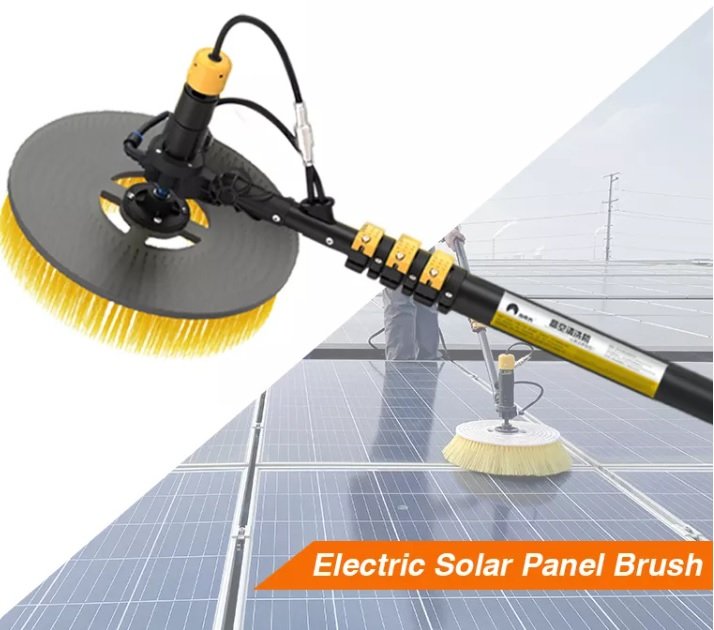

.jpg.728a7a419a13e3180f404af405d0043b.jpg)


